Rain gardens are growing in popularity as an environmentally friendly way to infiltrate stormwater into the home landscape. They have great potential to decrease overall demand on municipal sewer systems and are a cost-effective means of effectively managing storm runoff on site.
There are many different ways of creating rain gardens, and the first step is to determine where you’ll put yours and how big it will be. In this series, we’ll explore the basics of designing a rain garden. You can use it to guide a DIY installation or to gain a fuller understanding of rain garden best practices.
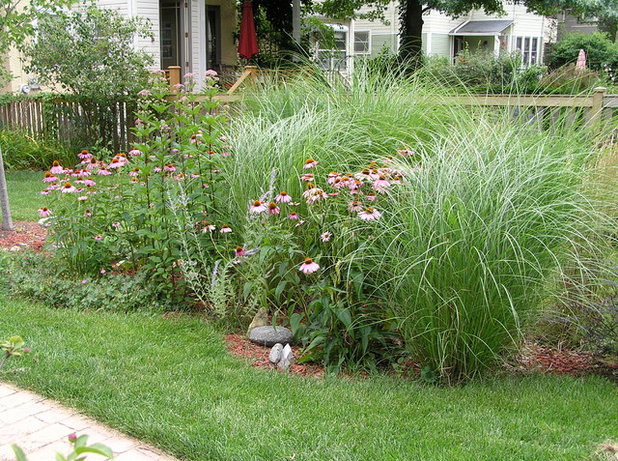
Anne Roberts Gardens, Inc.
What Is a Rain Garden? Rain gardens are planted areas that are designed to capture and slowly allow rainwater and stormwater runoff to infiltrate the landscape. They use natural processes to slow, filter and soak up stormwater, recharging the groundwater and contributing to the overall water quality of our communities.
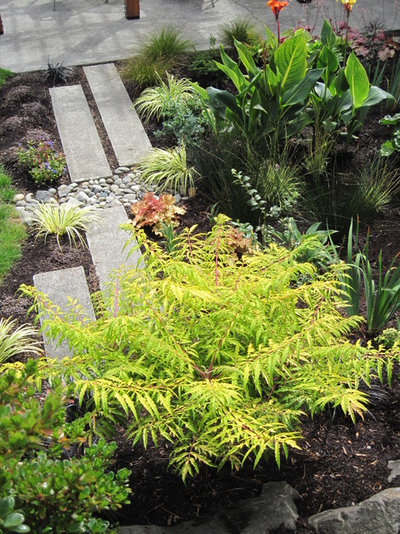
Banyon Tree Design Studio
1. Choose a LocationGet started with this checklist to make sure you’re choosing the best location for your rain garden. Make sure the site is:
- At least 10 feet from the house and foundations of all structures
- In full or partial sun
- Downhill from the runoff source (i.e., downhill from your roof downspout if collecting water from the roof)
- On a flat or gently sloped area
- In an area that has decent drainage; a rain garden returns water slowly into the soil, so it’s important that the native soil in your chosen spot not be soggy
- Not directly over utility lines or a septic system
- Suitable for your overall landscape in terms of circulation, views, entertaining areas, kids’ play areas and other garden beds
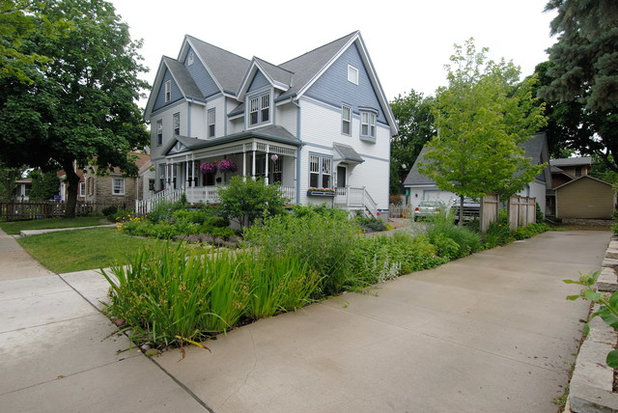
ZDA Inc.
2. Determine the Runoff SourceRain gardens can capture stormwater runoff from any impervious — also called non-pervious — surface. Even a sloping lawn will have surface runoff during a heavy storm, and a rain garden can capture that too. Runoff sources include:
- Rooftops
- Driveways and parking areas
- Patios and terraces
Calculate the surface area of the source so you can determine how big to make your rain garden. Use the footprint of your home to calculate your roof’s square footage, or the portion of roof that will be draining into your rain garden, or measure your driveway or other paved surface to determine its area.
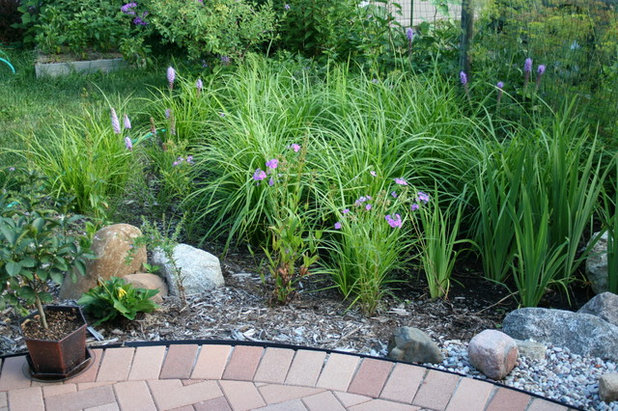
Formecology, LLC
3. Determine Your Rain Garden’s SizeThe size of your rain garden depends on how much stormwater runoff you aim to capture and the type of soil you have. (Most residential rain gardens are in the 100-to-300-square-foot range.)
After you’ve calculated your source’s surface area, gather the following information to determine how big to make your rain garden:
- Determine your soil type: sand, silt or clay
- Determine your yard’s slope: flat (less than 4 percent); moderate (5 to 7 percent); steep (8 to 12 percent)
Use this handy calculator by the Rain Garden Alliance to plug in your numbers for a suggested size and depth. There are several calculators out there. You can use them to get started, but you may want to consult a professional who can double-check your calculations and offer guidance.
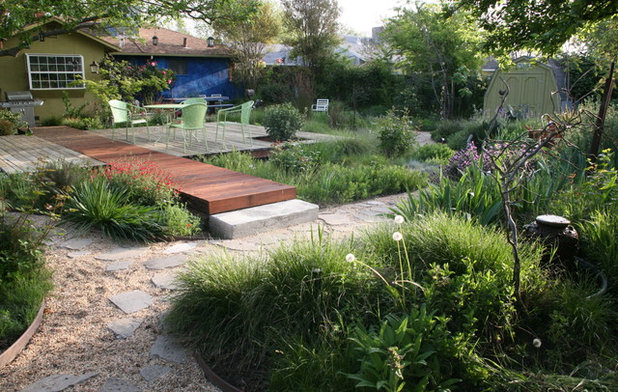
Luciole Design Inc.
Depth. Rain gardens are not swamps. They do not hold water or pool it for more than several hours after a storm. Instead, they should be freely draining, with a flat bottom just 4 to 8 inches deeper than the surrounding ground.
The base of your rain garden needs to be flat in order to evenly drain the water it collects. The steeper your yard’s existing slope is, the deeper your rain garden’s bottom will be. Use these depth ranges as a guide:
- Less than 4 percent slope: Depth should be 4 inches
- 5 to 7 percent slope: Depth should be 6 inches
- 8 to 12 percent slope: Depth should be 8 inches
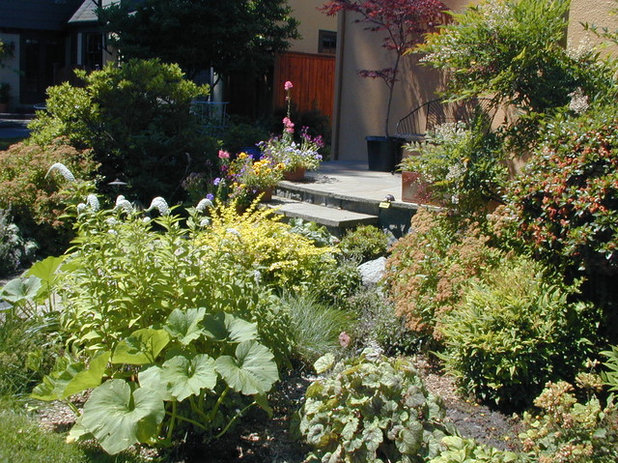
Plan-it Earth Design
Length and width. Break your overall square footage into length and width dimensions. In general, rain gardens are twice as long as they are wide, with the longest side perpendicular to the downward flow of water. This allows the rain garden to efficiently capture as much water as possible while also allowing the water to spread across the bottom of the rain garden. Don’t feel limited by the shape of a rectangle, though. Your rain garden can take an organic form, such as a crescent or kidney shape.
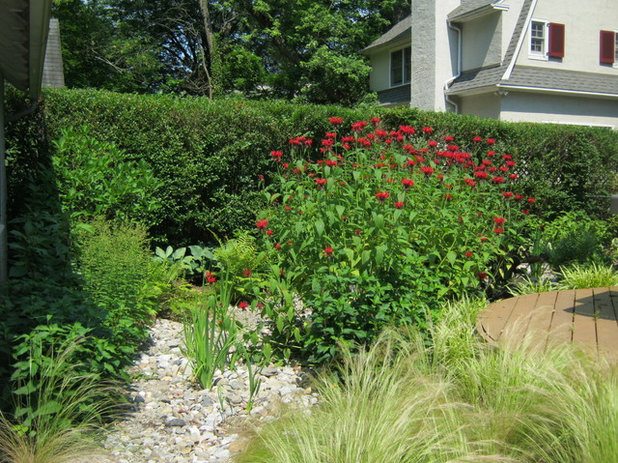
Pennsylvania Landscape & Nursery Association
Next: How to shape the ground and create the right soil for your rain garden





